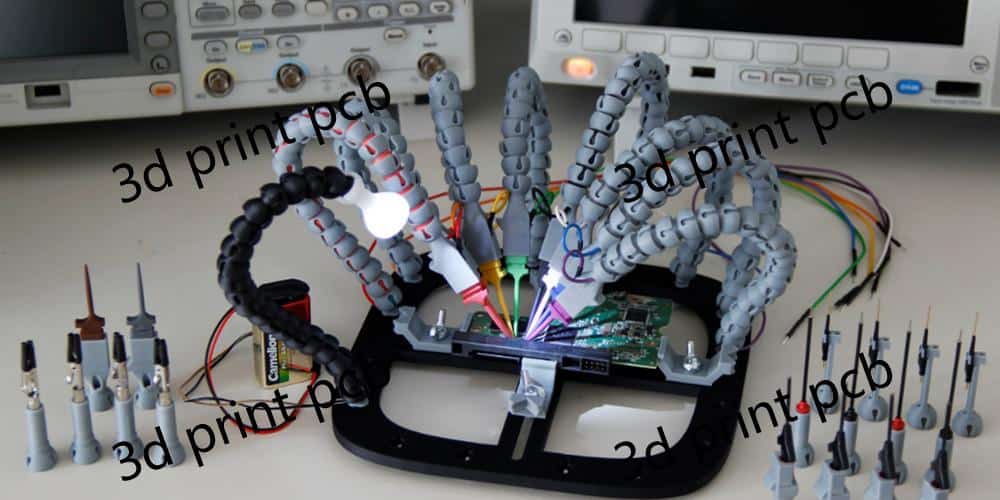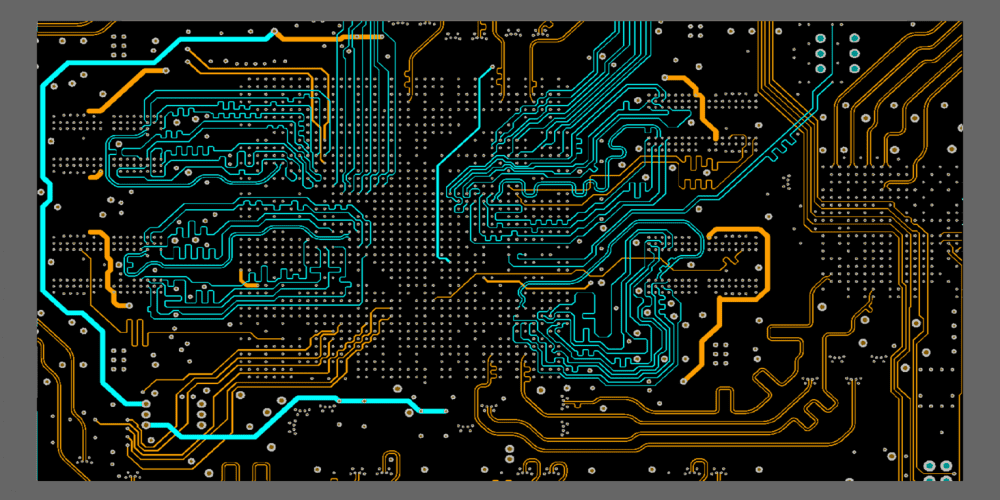Additive manufacturing, also known as 3D printing, has revolutionized the manufacturing industry by enabling the production of complex and customized parts with unmatched precision and speed. The technology has found applications in various fields, from aerospace to healthcare, and is now making strides in the electronics industry. Additively manufactured electronics, or AME, is an emerging field that combines 3D printing and electronics manufacturing to create novel devices and circuits.
AME offers several advantages over traditional electronics manufacturing methods, including the ability to create complex geometries and structures that are not possible with conventional techniques. This allows for the integration of multiple components and functionalities into a single device, reducing the size and weight of the final product. Moreover, AME enables rapid prototyping and iteration, allowing engineers to quickly test and refine their designs without the need for expensive tooling or molds. As a result, AME has the potential to accelerate innovation in the electronics industry and bring new products to market faster.
Despite its potential, AME is still in its early stages of development, and several challenges need to be addressed before it can be widely adopted. These include the development of new materials and processes that can meet the stringent requirements of the electronics industry, such as high conductivity and low resistivity. Additionally, the integration of electronics and 3D printing requires specialized equipment and expertise, which may limit its accessibility to smaller companies and startups. Nonetheless, the potential benefits of AME make it an exciting field to watch in the coming years.

Overview of Additive Manufacturing
Additive Manufacturing (AM) is a process of creating three-dimensional objects by adding material layer by layer. AM is also known as 3D printing, and it has become increasingly popular in recent years for its ability to produce complex and custom designs quickly and cost-effectively.
AM technology has been around for several decades, but it has only recently gained popularity in the electronics industry. Additive Manufacturing of Electronics (AME) involves the use of conductive inks and insulating materials to create electronic circuits and devices.
AME has several advantages over traditional manufacturing methods, including the ability to create complex designs with fewer parts, reduce material waste, and decrease production time. AME also allows for the customization of electronic devices, which is especially useful in the medical and aerospace industries.
There are several types of AME technologies, including Fused Deposition Modeling (FDM), Stereolithography (SLA), and Inkjet Printing. Each technology has its strengths and weaknesses, and the choice of technology depends on the specific application.
Overall, AME is a promising technology that has the potential to revolutionize the electronics industry. As the technology continues to improve, we can expect to see more complex and customized electronic devices that are produced quickly and cost-effectively.
Electronics Manufacturing Techniques

Traditional Electronics Manufacturing
Traditional electronics manufacturing techniques involve the use of subtractive manufacturing methods, such as etching and milling, to create electronic components. These methods are time-consuming and require a significant amount of material waste. Additionally, the traditional manufacturing process is often limited in terms of design complexity and customization.
Additive Manufacturing Techniques for Electronics
Additive manufacturing techniques, also known as 3D printing, have revolutionized the way electronic components are manufactured. Additive manufacturing allows for the creation of highly complex designs with minimal material waste. This technology has the potential to significantly reduce the cost and time required for electronics manufacturing.
There are several additive manufacturing techniques that can be used to create electronics, including:
-
Fused Deposition Modeling (FDM): This technique involves the deposition of molten plastic or metal onto a surface layer by layer to create a 3D object. FDM can be used to create electronic components such as circuit boards and sensors.
-
Stereolithography (SLA): This technique involves the use of a liquid resin that is cured by a UV laser to create a 3D object. SLA can be used to create highly detailed and complex electronic components.
-
Selective Laser Sintering (SLS): This technique involves the use of a laser to fuse powdered materials together to create a 3D object. SLS can be used to create metal electronic components.
Additive manufacturing techniques for electronics are still in the early stages of development, and there are several challenges that need to be addressed before they can be widely adopted. These challenges include the need for specialized materials and the development of new design software. However, the potential benefits of additive manufacturing for electronics are significant and continue to drive research and development in this field.
Benefits of Additively Manufactured Electronics

Design Freedom
Additive manufacturing allows for the creation of complex geometries that are not possible with traditional manufacturing methods. This design freedom enables engineers to create more efficient and compact electronic devices. With the ability to print electronics in three dimensions, it is possible to integrate multiple functions into a single component, reducing the need for additional parts and assembly.
Reduced Material Waste
Additive manufacturing is a highly efficient process that produces less material waste than traditional manufacturing methods. This is because the process only uses the exact amount of material required to create the component, reducing the amount of scrap material generated. Additionally, additive manufacturing can use recycled materials, further reducing waste and improving sustainability.
Improved Performance
Additive manufacturing allows for the creation of highly precise and customized electronic components. This precision and customization can result in improved performance and reliability compared to traditionally manufactured electronics. Additionally, additive manufacturing enables the integration of sensors and other components directly into the structure of the component, improving accuracy and reducing the risk of failure due to loose connections.
In conclusion, additive manufacturing has several benefits for the electronics industry, including design freedom, reduced material waste, and improved performance. These benefits can result in more efficient and sustainable electronic devices that meet the needs of modern consumers.
Challenges and Limitations

Material Selection and Compatibility
One of the main challenges in additively manufacturing electronics is selecting materials that are compatible with the printing process. The materials used in traditional electronics manufacturing, such as copper and aluminum, may not be suitable for additive manufacturing due to their thermal and electrical properties. Therefore, it is important to identify and develop new materials that are compatible with the printing process and can provide the required electrical and mechanical properties.
Another challenge is ensuring the compatibility of different materials used in the printing process. The materials used for the conductive traces, insulating layers, and dielectric materials must all be compatible with each other to ensure proper functioning of the final product. This requires careful selection and testing of the materials used in the printing process.
Print Quality and Resolution
Achieving high-quality prints with sufficient resolution is another challenge in additively manufacturing electronics. The printing process must be able to produce fine features and precise geometries to ensure the proper functioning of the final product. This requires careful calibration of the printing parameters and the use of high-quality printing equipment.
Another challenge is ensuring the consistency of the printing process. Any variation in the printing parameters or the quality of the printing equipment can result in defects or inconsistencies in the final product. Therefore, it is important to monitor and control the printing process to ensure consistent and high-quality prints.
Post-Processing and Assembly
Post-processing and assembly are also important factors to consider in additively manufacturing electronics. The printed parts must be carefully processed and assembled to ensure proper functioning of the final product. This may involve post-processing steps such as curing, annealing, or sintering, as well as assembly steps such as bonding or soldering.
One challenge in post-processing is ensuring the compatibility of the post-processing steps with the printed materials. Some post-processing steps may require high temperatures or harsh chemicals that can damage the printed parts. Therefore, it is important to carefully select and test the post-processing steps to ensure compatibility with the printed materials.
Another challenge is ensuring the consistency of the post-processing and assembly steps. Any variation in these steps can result in defects or inconsistencies in the final product. Therefore, it is important to monitor and control these steps to ensure consistent and high-quality products.
Overall, additively manufacturing electronics presents several challenges and limitations that must be carefully considered and addressed in order to produce high-quality and reliable products.
Applications and Future Directions

Current Applications
Additively manufactured electronics are already being used in a variety of applications. One example is the production of sensors and antennas. These devices can be printed directly onto a substrate, allowing for easy integration into a wide range of products. Additionally, additively manufactured electronics are being used to create customized circuit boards and other electronic components.
Another current application is the production of flexible electronics. Additive manufacturing techniques such as 3D printing and inkjet printing allow for the creation of flexible substrates that can be used to produce flexible circuits and other electronic devices. This technology has the potential to revolutionize the wearable technology industry, as well as the development of medical devices.
Potential Future Applications
The potential applications for additively manufactured electronics are vast and varied. One area of interest is the creation of electronic devices that are integrated into the fabric of buildings, vehicles, and other structures. This could include the production of smart windows, which can adjust their transparency based on the amount of sunlight entering a room, or the creation of sensors that monitor the structural integrity of buildings.
Another area of interest is the use of additively manufactured electronics in space exploration. The ability to produce electronic components on demand could significantly reduce the cost and complexity of space missions. Additionally, the production of flexible electronics could be particularly useful in the development of wearable technology for astronauts.
Research and Development
There is ongoing research into the development of new materials and techniques for additively manufactured electronics. One area of focus is the creation of conductive inks that can be used to print electronic components. Researchers are also exploring the use of new materials such as graphene and carbon nanotubes, which have unique electrical properties that could be useful in the production of electronic devices.
Another area of research is the development of new additive manufacturing techniques. For example, researchers are exploring the use of 3D printing to produce electronic components with complex geometries that would be difficult or impossible to create using traditional manufacturing methods.
Overall, the future of additively manufactured electronics is promising, with a wide range of potential applications in a variety of industries. As research and development in this field continue, we can expect to see even more innovative uses for this technology.

